#louis-françois lejeune
Text
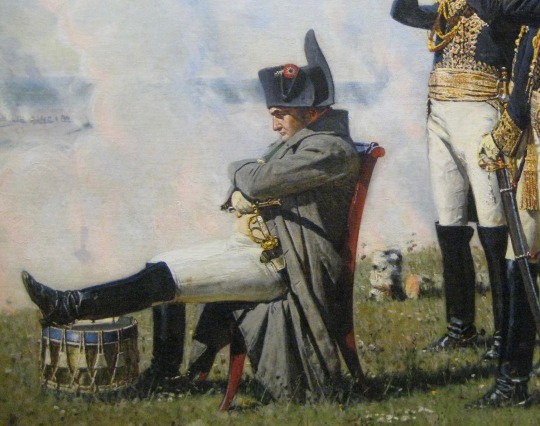
Recollections from Lejeune and Ségur on Napoleon’s uncharacteristic lack of energy, possibly a result of illness, at Borodino.
***
I was surprised that the Emperor had shown so little of the eager activity which had before so often ensured success. On the present occasion he had not mounted except to reach the battle field, and had remained seated below his Guard on a sloping mound, from which he could see everything. Several balls had passed over his head. Whenever I returned from the numerous errands on which I was sent, I found him still seated in the same attitude, following every movement with the aid of his pocket field-glass, and giving his orders with imperturbable composure. But we did not see him now, as so often before, galloping from point to point, and with his presence inspiring our troops wherever the struggle was prolonged and the issue seemed doubtful. We all agreed in wondering what had become of the eager, active commander of Marengo, Austerlitz, and elsewhere. We none of us knew that Napoleon was ill and suffering, quite unable to take a personal part in the great drama unfolded before his eyes, the sole aim of which was to add to his glory. In this terrible drama had been engaged Tartars from the confines of Asia, with the élite of the troops of some hundred European nations, for from the east and from the west, from the north and from the south, men had flocked to fight with desperate courage for or against Napoleon. The blood of some 80,000 Russians and Frenchmen had been shed to consolidate or to overturn his power, and he looked on with an appearance of absolute sang-froid at the awful vicissitudes of the terrible tragedy. We were all anything but satisfied with the way in which our leader had behaved, and passed very severe strictures on his conduct. Supper interrupted our discussion, and after it we were soon all wrapped in heavy slumber, whilst the chief, whom we had been accusing so severely, was watching and studying how best to resume the conflict the next morning.
—The Memoirs of Baron Lejeune, Vol II
***
Belliard then returned for the third time to the emperor, whose sufferings appeared to have increased. He mounted his horse with difficulty, and rode slowly along the heights of Semenowska. He found a field of battle imperfectly gained, as the enemy’s bullets, and even their musket-balls, still disputed the possession of it with us.
In the midst of these warlike noises, and the still burning ardour of Ney and Murat, he continued always in the same state, his gait desponding, and his voice languid. The sight of the Russians, however, and the noise of their continued firing, seemed again to inspire him; he went to take a nearer view of their last position, and even wished to drive them from it. But Murat, pointing to the scanty remains of our own troops, declared that it would require the guard to finish; on which, Bessières continuing to insist, as he always did, on the importance of this corps d’élite, objected “the distance the emperor was from his reinforcements; that Europe was between him and France; that it was indispensable to preserve, at least, that handful of soldiers, which was all that remained to answer for his safety.” And as it was then nearly five o’clock, Berthier added, “that it was too late; that the enemy was strengthening himself in his last position; and that it would require a sacrifice of several more thousands, without any adequate results.” Napoleon then thought of nothing but to recommend the victors to be prudent. Afterwards he returned, still at the same slow pace, to his tent, that had been erected behind that battery which was carried two days before, and in front of which he had remained ever since the morning, an almost motionless spectator of all the vicissitudes of that terrible day. (…)
After he had retired to his tent, great mental anguish was added to his previous physical dejection. He had seen the field of battle; places had spoken much more loudly than men; the victory which he had so eagerly pursued, and so dearly bought, was incomplete. Was this he who had always pushed his successes to the farthest possible limits, whom Fortune had just found cold and inactive, at a time when she was offering him her last favours? (…)
Murat then exclaimed, “That in this great day he had not recognized the genius of Napoleon!” The viceroy confessed “that he had no conception what could be the reason of the indecision which his adopted father had shown.” Ney, when he was called on for his opinion, was singularly obstinate in advising him to retreat.
Those alone who had never quitted his person, observed, that the conqueror of so many nations had been overcome by a burning fever, and above all by a fatal return of that painful malady which every violent movement, and all long and strong emotions excited in him. They then quoted the words which he himself had written in Italy fifteen years before: “Health is indispensable in war, and nothing can replace it;” and the exclamation, unfortunately prophetic, which he had uttered on the plains of Austerlitz: “Ordener is worn out. One is not always fit for war; I shall be good for six years longer, after which I must lie by.”
—General Philippe-Paul, Comte de Ségur, History Of The Expedition To Russia, Undertaken By The Emperor Napoleon, In The Year 1812
#Napoleon#Napoleon Bonaparte#Napoleonic wars#Louis-François Lejeune#Comte de Ségur#Borodino#1812#memoirs
97 notes
·
View notes
Text


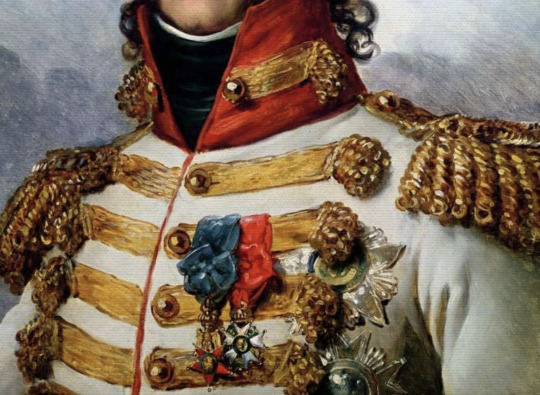
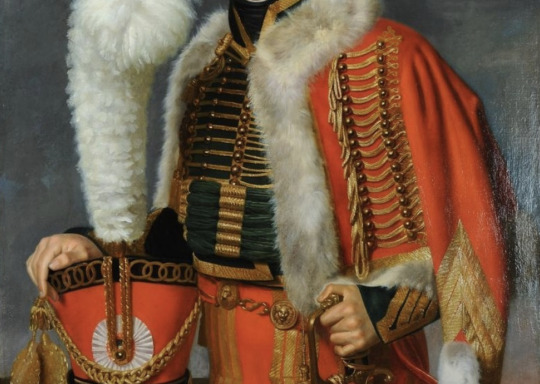
French Military Uniforms from the Napoleonic Wars (details)
Paintings Included:
Napoleon Bonaparte on the Bridge at Arcole by Antoine-Jean Gros / Portrait of Lieutenant-General Pierre-Jean-Levy d’Albignac by Alexandre-Jean Dubois-Drahonet / Portrait of Joachim Murat by François Gérard / Self-Portrait by Louis-François Lejeune
#napoleonic wars#napoleonic era#19th century#french art#first french empire#french empire#french revolution#napoleon#napoleon bonaparte#Antoine-Jean Gros#Drahonet#murat#Joachim Murat#François Gérard#Louis-François Lejeune#Lejeune#Gérard#european art#gros#regency#romanticism#empire style#classical
54 notes
·
View notes
Photo
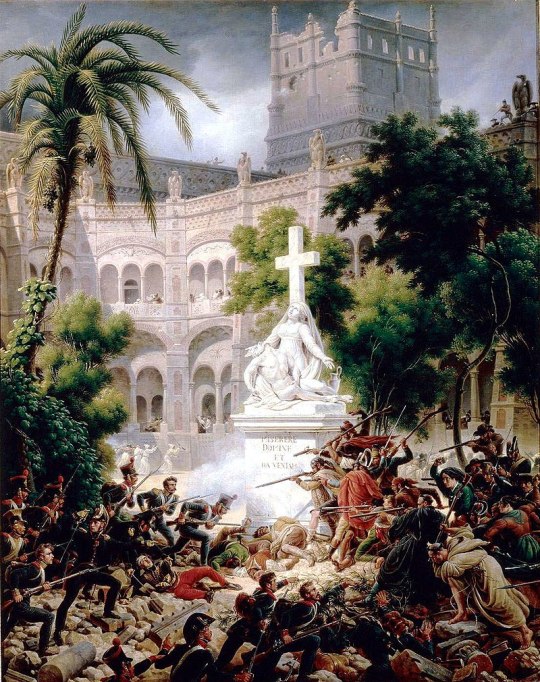
Assaut du monastère de Santa Engracia by Louis-François, Baron Lejeune. Depicts the fighting of February 8, 1809. Oil on canvas.
19 notes
·
View notes
Text

Bivouac on the Eve of the Battle of Austerlitz, 1st December 1805
by Louis-François Lejeune
#napoléon bonaparte#napoleon#bonaparte#art#history#painting#europe#european#france#french#battle of austerlitz#louis-françois lejeune#general#césar berthier#jean-baptiste bessières#battle#napoleonic#napoleonic wars#napoléon#napoleon bonaparte
31 notes
·
View notes
Photo

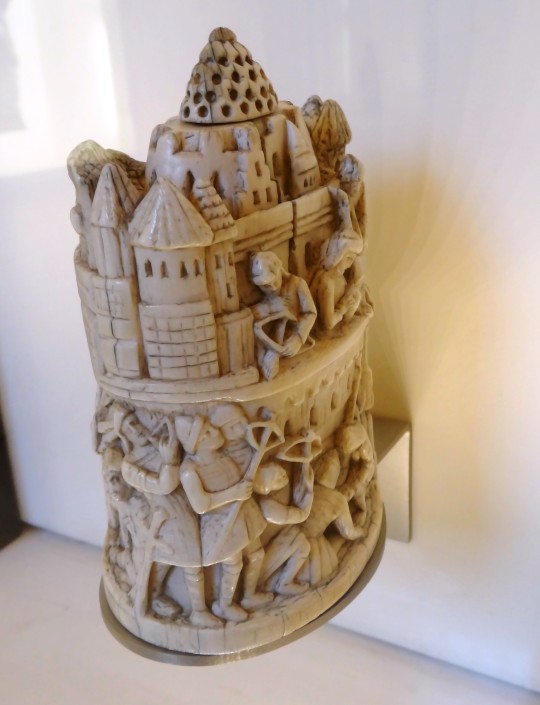

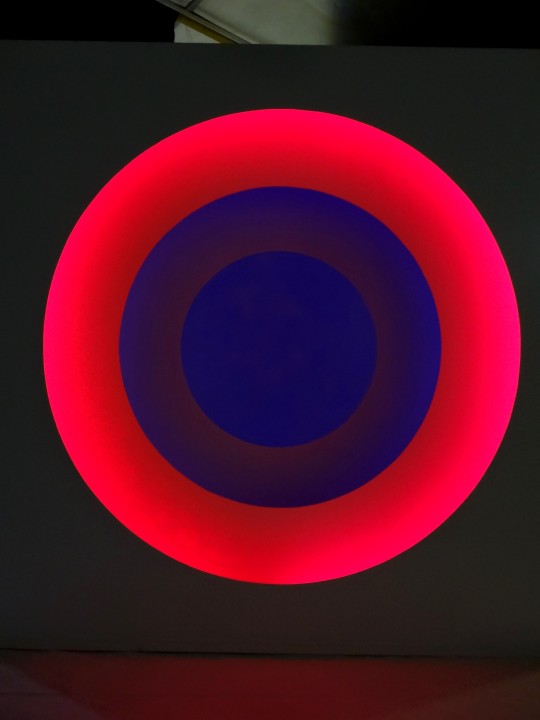
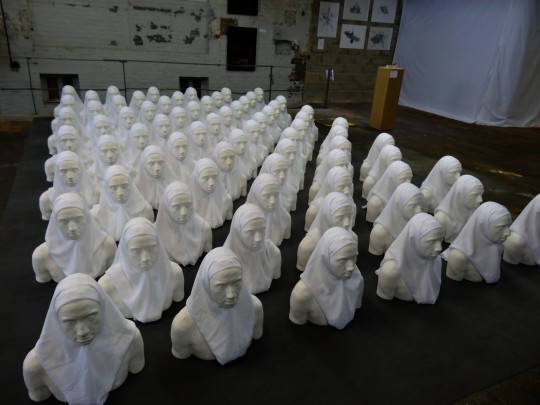
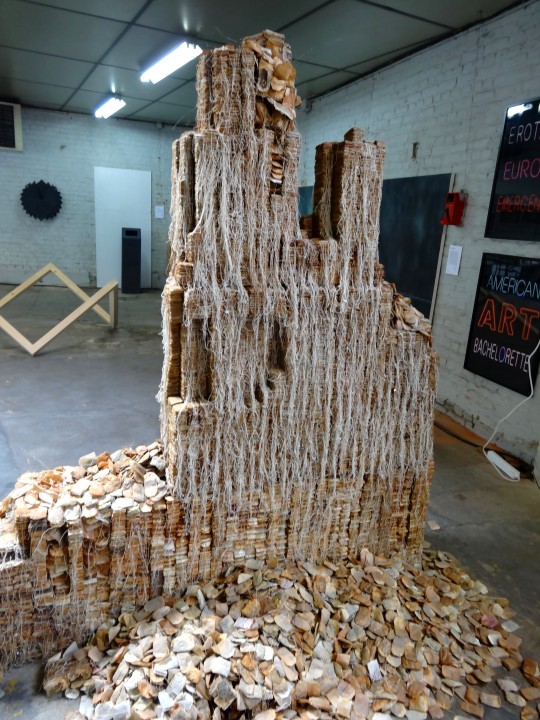
Je reviens à mon projet de présenter la plupart de mes 55000 photos (nouveau compte approximatif. On se rapproche du présent !).
2015. Douai.
- les 3 premières : Musée de la Chartreuse
- “Le Bon Pasteur” - Goa, XVIIe s.
- pion d'échec - "Attaque d'un Fort" - Angleterre, 1250
- Louis-François Lejeune : ''Episode de la Campagne de Prusse - M.de
Châtillon” (bon apparemment il n’est pas content qu’on lui ait piqué son slip)
- les 3 suivantes : expo “Hybride”:
- Ch.Beaufort : “Photosphère”
- Mehdi-Georges Lahlou : “72 Vierges”
- Armen Rotch : “Continuum” (fait avec des sachets de thé)
#souvenirs#douai#nord#chartreuse de douai#musée de la chartreuse#chartreuse#bon pasteur#goa#pion#échecs#médiéval#louis-françois lejeune#monsieur de châtillon#moustache#hybride#mehdi-georges lahlou#couleur#armen rotch#thé#sachet de thé
4 notes
·
View notes
Text
The updated list of nominees so far:
France:
Jean Lannes
Josephine de Beauharnais
Thérésa Tallien
Jean-Andoche Junot
Joseph Fouché
Charles Maurice de Talleyrand
Joachim Murat
Michel Ney
Jean-Baptiste Bernadotte (Charles XIV of Sweden)
Louis-Francois Lejeune
Pierre Jacques Étienne Cambrinne
Napoleon I
Marshal Louis-Gabriel Suchet
Jacques de Trobriand
Jean de dieu soult.
François-Étienne-Christophe Kellermann
Louis Davout
Pauline Bonaparte, Duchess of Guastalla
Eugène de Beauharnais
Jean-Baptiste Bessières
Antoine-Jean Gros
Jérôme Bonaparte
Andre Masséna
England:
Richard Sharpe (The Sharpe Series)
Tom Pullings (Master and Commander)
Arthur Wellesley, 1st Duke of Wellington
Jonathan Strange (Jonathan Strange & Mr. Norrell)
Captain Jack Aubrey (Aubrey/Maturin books)
Horatio Hornblower (the Hornblower Books)
William Laurence (The Temeraire Series)
Austria:
Klemens von Metternich
Friedrich Bianchi, Duke of Casalanza
Franz I/II
Archduke Karl
Marie Louise
Poland:
Wincenty Krasiński
Józef Antoni Poniatowski
Józef Zajączek
Maria Walewska
Russia:
Alexander I Pavlovich
Alexander Andreevich Durov
Prince Andrei (War and Peace)
Pyotr Bagration
Mikhail Miloradovich
Levin August von Bennigsen
Prussia:
Louise von Mecklenburg-Strelitz
Gebard von Blücher
Carl von Clausewitz
Frederick William III
Gerhard von Scharnhorst
Louis Ferdinand of Prussia
Friederike of Mecklenburg-Strelitz
The Netherlands:
Ida St Elme
Wiliam, Prince of Orange
The Papal States:
Pius VII
#napoleonic sexyman tournament#there is something mildly funny about the English being overwhelmingly fictional Englishmen#and Wellington
54 notes
·
View notes
Note
For the character fanart: Louis-François Lejeune (if he hasn't been suggested already), and Parzival.
Is it fanart if it's my son?

Unclear how Brutus has saved Parz's life, but Parz does ride better with a horse with enough opinions to stop him from jumping off a cliff.
Parz: I'm sure it's fine.
Brutus: NOPE.
*bridge suddenly collapses in a stiff breeze*
Parz: Ah, you were right, old chap.
#Kaxen Answers#clove-pinks#Lejeune strikes me as the horse equivalent of the guy who constantly gets his car dinged up on accident#Unclear if merely the trials of war or if Lejeune is this bad even in civilian life#parzival#handsome hussars#louis francois lejeune#louis-francois lejeune#the perspective on Brutus might be wonky because I used a toy horse because I was too lazy to google the exact photo I needed#IDK how focal lengths work#sketch
18 notes
·
View notes
Text
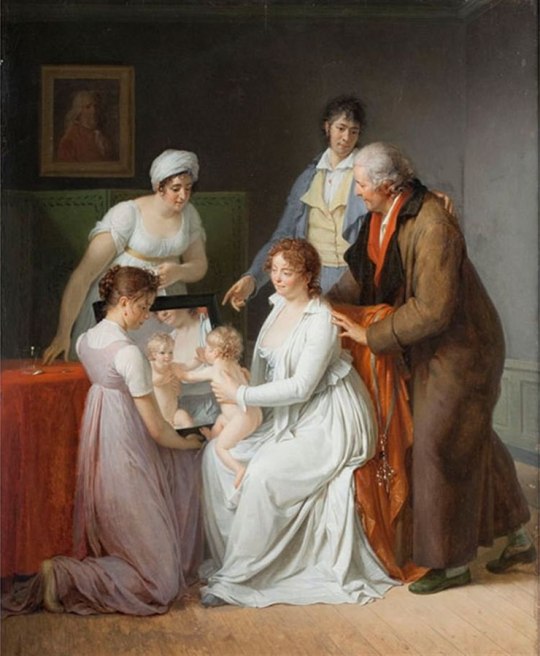
Jacques Augustin Pajou - Portrait of the Artist's Family - ca 1802
oil on canvas, 63 x 52 cm, Musée du Louvre
Jacques-Augustin-Catherine Pajou (27 August 1766, Paris - 28 November 1828, Paris) was a French painter in the Classical style.
His father was the sculptor, Augustin Pajou. Nothing is known of his childhood. In 1784, at the age of eighteen, he became a student at the Académie royale de peinture et de sculpture. Four attempts to win the Prix de Rome were unsuccessful.
In 1792, he became a member of the Compagnie des arts de Paris, organized by the Louvre, alongside the painter Louis-François Lejeune as well as the future economist, Jean-Baptiste Say. While stationed with the regular army in Sedan, he wrote numerous letters to his friend, François Gérard. which express his initial enthusiasm, but gradually turn to boredom, disillusionment and physical exhaustion.
After being demobilized, he participated in creating the "Commune générale des arts", an institution designed to replace the Académie Royale. He served as Secretary for the Commune's President, Joseph-Marie Vien. In 1795, he married Marie-Marguerite Thibault (1764-1827). Under the First Empire, he was commissioned to paint a portrait of Maréchal Louis-Alexandre Berthier, which may still be seen at Versailles. In 1812, he was awarded a gold medal for his depiction of Napoleon offering clemency to the Royalists who had taken refuge in Spain.
In 1811, at the urging of François-Guillaume Ménageot, who had become apprised of the precarious financial situation facing the sculptor David d'Angers, Pajou wrote a letter to the mayor of Angers, demanding that material aid be given to the sculptor. The aid was granted and was considered a lifesaver for d'Angers, who went on to win the Prix de Rome for sculpture and spend several years at the French Academy in Rome. In 1814, he painted three tableaux celebrating the Bourbon Restoration. They were displayed at the Salon and it is possible they were seen by Napoleon.
He resigned from most of the associations of which he was a member in 1823, citing poor health. In a letter from that period, he says that he was "cruelly tormented for a year by a continual tremor." He died in 1828 and was interred at the Cimetière du Père-Lachaise.
His son, Augustin-Désiré Pajou also became a well-known painter.
3 notes
·
View notes
Photo

(after Louis François, Napoleon on the battlefield of Eylau)
A brief snippet from Saint-Chamans’ memoirs, taking place on the morning after the battle:
It was during this same visit to the battlefield of Eylau that the Emperor, having seen a young Russian hussar lying on the snow with his leg shattered by a cannonball, had him questioned by an interpreter, who translated the words of this hussar as follows: "Tell the Emperor to have me healed, and I will serve him as I served Alexander.”
Napoleon ordered one of his surgeons to take care of him; I do not know what has become of him since, but this story has provided the subject of several paintings, and I saw shortly afterwards M. Lejeune, a good painter of battles and Berthier's aide-de-camp, working on a painting about this event at Finkenstein.
So, we know how Lejeune spent all those weeks in Poland.
#napoleon's generals#louis francois lejeune#kaxenart#i just love it when the boys meet each other on the job
19 notes
·
View notes
Text
The Battle of Marengo was fought on 14th June, 1800 between French forces under the First Consul Napoleon Bonaparte and Austrian forces near the city of Alessandria, in Piedmont, Italy.
Surprised by the Austrian advance toward Genoa in mid-April 1800, Bonaparte hastily led his army over the Alps in mid-May and reached Milan on 2nd June. After cutting Melas's line of communications by crossing the River Po and defeating Feldmarschallleutnant (FML) Peter Karl Ott von Bátorkéz at Montebello on 9th June, the French closed in on the Austrian Army, which had massed in Alessandria. Deceived by a local double agent, Bonaparte dispatched large forces to the north and the south, but the Austrians launched a surprise attack on 14th June against the main French army, under General Louis Alexandre Berthier.
Initially, their two assaults across the Fontanone stream near Marengo village were repelled, and General Jean Lannes reinforced the French right. Bonaparte realized the true position and issued orders at 11:00 am to recall the detachment under Général de Division (GdD) Louis Desaix while he moved his reserve forward. On the Austrian left, Ott's column had taken Castel Ceriolo, and its advance guard moved south to attack Lannescs flank. Melas renewed the main assault, and the Austrians broke the central French position. By 2:30 pm, the French were withdrawing, and Austrian dragoons seized the Marengo farm.
Bonaparte had by then arrived with the reserve, but Berthier's troops began to fall back on the main vine belts. Knowing that Desaix was approaching, Bonaparte was anxious about a column of Ott's soldiers marching from the north and so he deployed his Consular Guard infantry to delay it. The French then withdrew steadily eastward toward San Giuliano Vecchio as the Austrians formed a column to follow them, as Ott also advanced in the northern sector.
Desaix's arrival at around 5:30 pm stabilized the French position, as the 9th Light Infantry Regiment delayed the Austrian advance down the main road and the rest of the army reformed north of Cascina Grossa. As the pursuing Austrian troops arrived, a mix of musketry and artillery fire concealed the surprise attack of Général de Brigade (GdB) François Étienne de Kellermann’s cavalry, which threw the Austrian pursuit into disordered flight back into Alessandria, with about 14,000 killed, wounded or captured.
The French casualties were considerably fewer but included Desaix. The whole French line chased after the Austrians to seal une victoire politique (a political victory) that secured Bonaparte's grip on power after the coup.
It would be followed by a propaganda campaign that sought to rewrite the story of the battle three times during his rule.
(Information From Wikipedia)
Painting - THE BATTLE OF MARENGO
Artist(s) : LEJEUNE Louis François (baron)
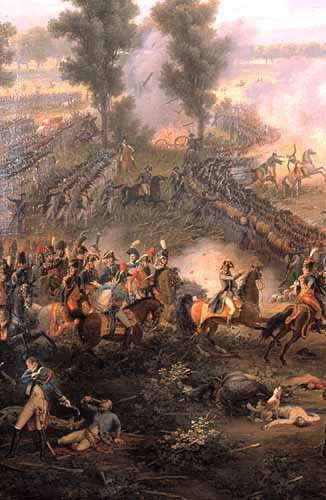
7 notes
·
View notes
Text
ソサエティ諸島ボラボラ島の景観
【元絵】
題名:Vue de l'ile BoraBora (Ils de la Société) (1826/1830)
ソサエティ諸島ボラボラ島の景観
作者:Louis-François Lejeune
ラフスケッチ:ルイ=フランソワ・ルジューヌ
作者:Antoine Chazal
水彩画:アントワーヌ・シャザル
作者:Ambroise Tardieu
彫板:アンブロワーズ・タルデュー
媒体:エングレービング
掲載:Duperrey, Louis Isidore; "Voyage autour du monde : exécuté par Ordre du Roi, sur La Corvette de la Majesté La Coquille, pendant les années 1822,1823,1824 et 1825; historie du voyage, Atlas", Paris, 1826
『コキーユ号世界航海記』探検航海編
【使用作品】
たぬき城 [030-262-001] [030-263-001 他]
『墓場の鬼太郎』「妖怪獣」 (1967)
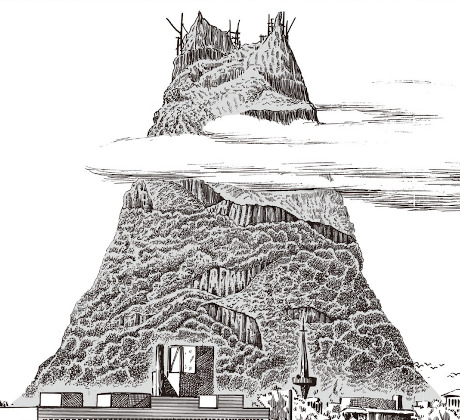
使用作品部分

元絵部分
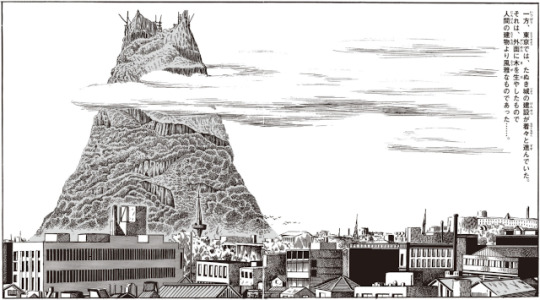

2 notes
·
View notes
Text
An excerpt from Lejeune’s memoirs from an incident during the battle of Borodino (7 September 1812).
When I got back to the Emperor he had already been able to judge of the good results achieved by the artillery of his Guard, and he was still hesitating whether, as many amongst us wished, he should follow up this success with a grand charge from the whole of the brilliant cavalry of the Guard. Just at this moment a Russian lieutenant-general who had been taken prisoner was brought to the Emperor. After having talked to him very politely for a few minutes, the Emperor said to some one standing by, “Give me his sword.” A Russian sword was at once brought, and the Emperor, taking it, graciously offered it to the Russian general with the words, “I return your sword.” It so happened, however, that it was not the prisoner's own sword, and, not understanding the honour the Emperor meant to do him, the Russian general refused to receive the weapon. Napoleon, astonished at this want of tact in a general, shrugged his shoulders, and turning to us said, loud enough for the General to hear him, “Take the fool away!”
—The Memoirs of Baron Lejeune, Vol II
22 notes
·
View notes
Text

I posted 1,657 times in 2022
That's 1,657 more posts than 2021!
110 posts created (7%)
1,547 posts reblogged (93%)
Blogs I reblogged the most:
@kaxen
@joachimnapoleon
@microcosme11
@josefavomjaaga
@kaxenart
I tagged 269 of my posts in 2022
#louis-francois lejeune - 81 posts
#napoleonic - 81 posts
#napoleonic era - 70 posts
#napoleonic wars - 68 posts
#louis francois lejeune - 54 posts
#french republican calendar - 27 posts
#french revolutionary calendar - 27 posts
#handsome hussars - 24 posts
#fighting for napoleon french soldiers letters - 17 posts
#youtube - 16 posts
Longest Tag: 128 characters
#giving too much credit to nappy is probably my peeve outside of there's only one thing with lejeune in it and they did him dirty
My Top Posts in 2022:
#5
The Battle of Zurich, 25th September 1799 by François Bouchot
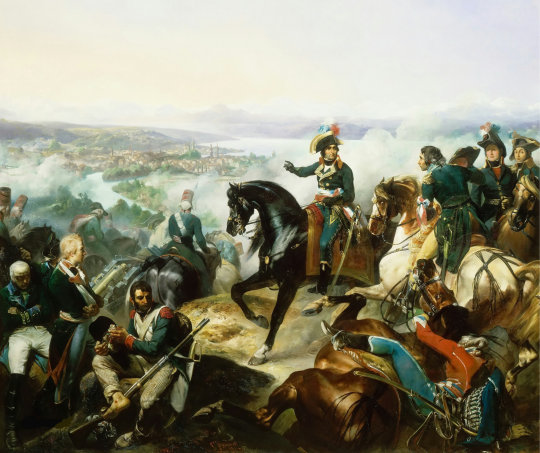
Guy having the Worst Day
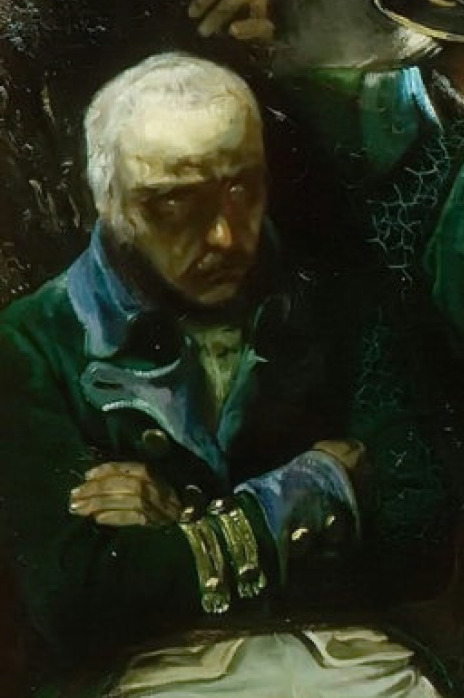
I like this guy
See the full post
20 notes - Posted August 5, 2022
#4

Denver Art Museum only had one Hussar pop up in search, but this man is Maximum Ye Olde Spandex.
....I have no idea what the French equivalent of the "Ye Olde" affectation is...
Le Hussard en Famille by Marguerite Gérard
24 notes - Posted April 27, 2022
#3
Another letter from Fighting for Napoleon French Soldiers' Letters 1799-1815
Caspet Spain 18 November year 1809
Dear father and mother and all the family
[...] I ask you to tell me how my brothers are. You never tell me if they are going to be drafted. I recommend that my brothers learn a wind instrument because if they were unlucky enough to be conscripted, they could join a military band. I hope that you will send money with your answer. I have to tell you that Hubert Pasleau was killed in Saragossa. There is no military band in the 115th [Regiment of the Line]. There was one band but they were all slain.
Send my regards to the widow Fortin and tell her that her son is well [. . .]
"Join the military band to have less chance of dying. Also our entire band died"
36 notes - Posted May 9, 2022
#2
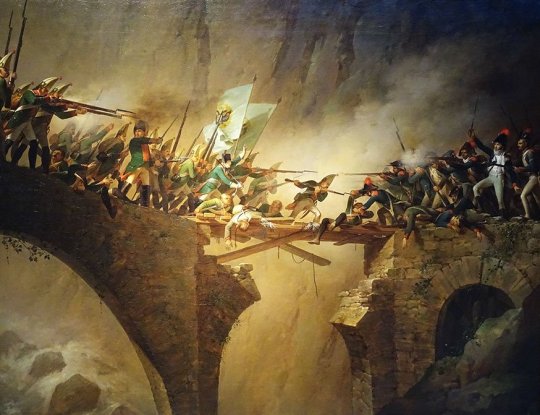
Bataille au Pont du Diable 1799 by Jean Baptiste Seele
I assume the tiny-ness of the planks is for drama, but like the visuals of it all
41 notes - Posted May 25, 2022
My #1 post of 2022
Some Detail Shots of Passage du Rhin par l'armée française à Dusseldorf, 6 septembre 1795 by Louis-Francois Lejeune


See the full post
42 notes - Posted April 26, 2022
Get your Tumblr 2022 Year in Review →
1 note
·
View note
Photo
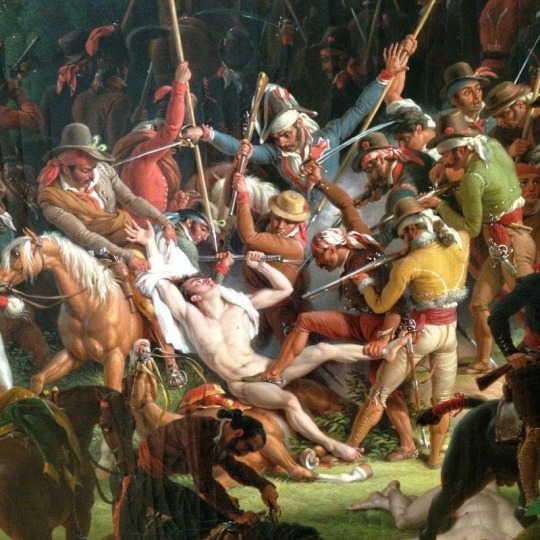
Louis François Lejeune (1775-1848)
Escarmouche de Guisando (détail)
0 notes
Text
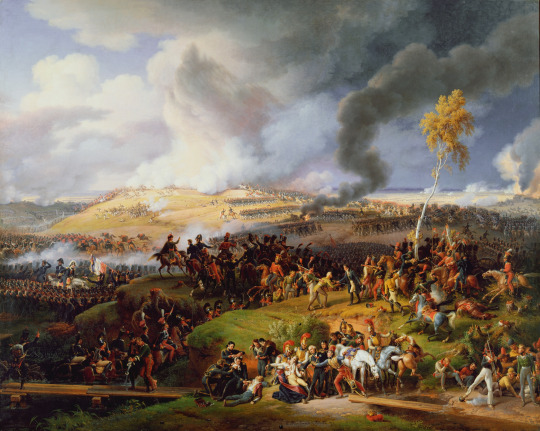
Battle of Borodino - Battle of Moscow, 7th September 1812
by Louis-François Lejeune
#battle of borodino#battle of moscow#art#history#painting#europe#european#napoleonic#napoleonic wars#russia#france#french empire#french#la grande armée#russian#russian campaign#palace of versailles#château de versailles#louis-françois lejeune
45 notes
·
View notes
Photo


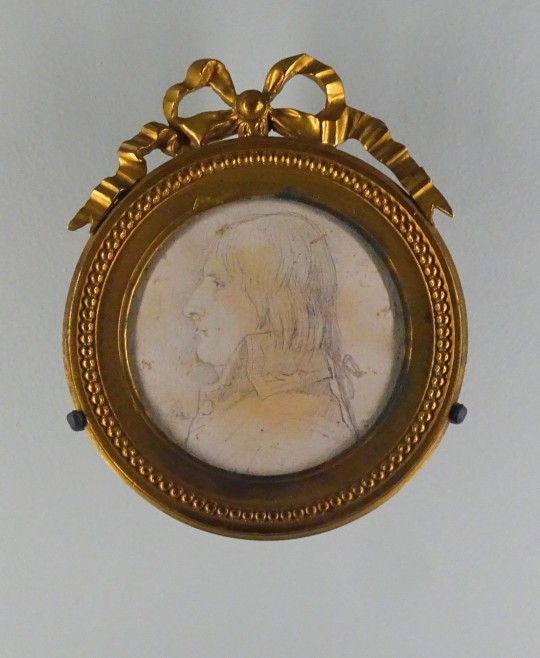
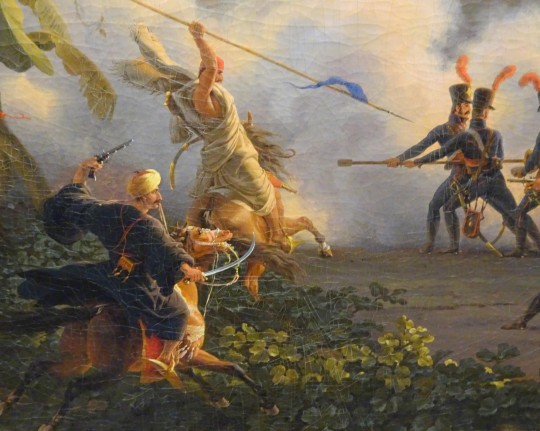



Au Louvre-Lens, il y avait une expo fort intéressante : “Champollion - La Voie des Hiéroglyphes”, sur l’homme, son époque, l’image de l’Egypte en Europe avant l’Egyptologie....
- les 2 premières : Jean-Antoine Lépine - Pendule “de Dendéra”
- André Dutertre - "Napoléon Bonaparte”
- le reste : Louis-François Lejeune - "Bataille des Pyramides, le 21 Juillet 1798″
#louvre-lens#expo#champollion#la voie des hiéroglyphes#égypte#égypte antique#égyptologie#style empire#jean-antoine lépine#dendéra#temple de dendéra#pendule#andré dutertre#napoléon#bonaparte#louis-françois lejeune#bataille des pyramides#campagne d'égypte#mamelouks#moustache
5 notes
·
View notes